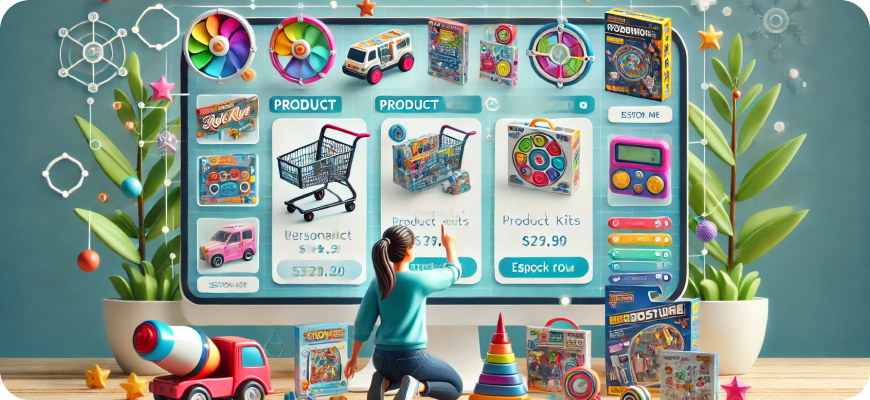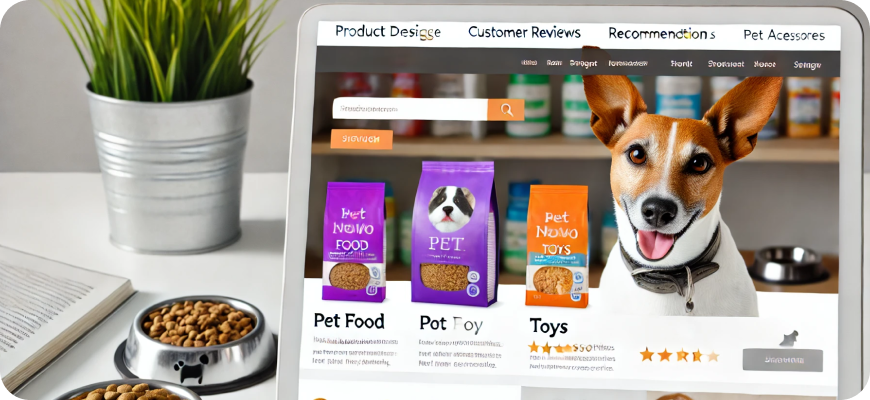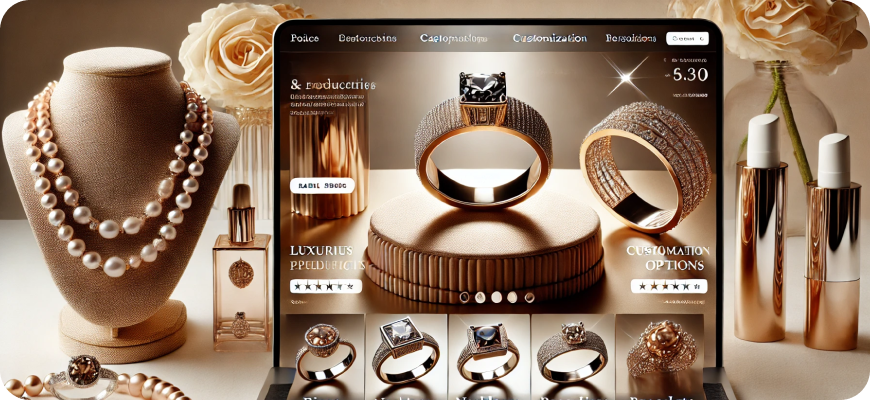Customer segmentation, DOs and DONTs, and a full guide
Customer segmentation is a powerful strategy for understanding your audience, personalizing marketing efforts, and enhancing overall customer experience. By dividing a broad customer base into smaller, more specific groups, businesses can tailor their messaging, product offerings, and services to meet the needs of each segment. This guide covers the DOs and DON’Ts of customer segmentation, types of segmentation methods, best practices, and actionable steps for successful segmentation.

What is Customer Segmentation?
Customer segmentation is the process of categorizing a customer base into distinct groups based on common characteristics. These characteristics can range from demographics (e.g., age, income, gender) to behavior (e.g., purchase frequency, loyalty, browsing habits) and psychographics (e.g., lifestyle, values, personality traits). Effective segmentation allows businesses to deliver relevant content, make better product recommendations, and ultimately create a more personalized experience for customers.
Why is Customer Segmentation Important?
Segmentation enables businesses to:
- Enhance Personalization: By understanding the specific needs of each segment, businesses can tailor their products, services, and marketing strategies accordingly.
- Increase Conversion Rates: Targeted marketing leads to higher engagement, as messages are more relevant and persuasive.
- Improve Customer Retention: When customers feel that a brand understands and meets their needs, they are more likely to remain loyal.
- Optimize Marketing Spend: Segmentation ensures that resources are spent on the highest potential customer groups, maximizing ROI.
Types of Customer Segmentation
To create effective customer segments, it’s essential to understand the different types of segmentation available. Below are the primary categories:
1. Demographic Segmentation
This is the most common segmentation type and involves dividing customers based on quantifiable characteristics, such as:
- Age
- Gender
- Income
- Education level
- Occupation
2. Geographic Segmentation
Geographic segmentation divides customers based on location-related factors, which can impact purchasing behavior and preferences. Common categories include:
- Country, state, or city
- Climate (e.g., cold, warm, tropical)
- Urban, suburban, or rural settings
3. Psychographic Segmentation
Psychographic segmentation focuses on lifestyle, personality traits, interests, values, and attitudes. This type of segmentation helps create a deeper emotional connection with customers.
4. Behavioral Segmentation
Behavioral segmentation categorizes customers based on their purchasing behavior and interactions with the brand. This may include:
- Purchase frequency
- Spending habits
- Brand loyalty
- Product usage or engagement level
5. Technographic Segmentation
With the increase in digital adoption, technographic segmentation is becoming more popular. This approach focuses on technology usage, such as:
- Device preferences (e.g., mobile vs. desktop)
- Software or app usage
- Technology readiness (e.g., early adopters vs. late adopters)
The DOs of Customer Segmentation
When done correctly, segmentation can unlock valuable insights and drive meaningful engagement. Here are the DOs to keep in mind:
DO 1: Set Clear Goals for Segmentation
Define the objectives behind your segmentation efforts. Are you aiming to improve customer retention, increase cross-sell opportunities, or drive higher engagement with marketing campaigns? Clear goals help guide the segmentation process and ensure it aligns with business objectives.
DO 2: Collect and Analyze Relevant Data
Effective segmentation relies on quality data. Collect data from a variety of sources, such as CRM systems, social media analytics, website behavior, and customer feedback. Analyzing this data will reveal patterns and trends that can guide segmentation.
DO 3: Use a Combination of Segmentation Criteria
Customers are complex, and a single segmentation type may not capture the nuances of their needs. Use a combination of criteria, such as demographic, behavioral, and psychographic data, to create richer and more meaningful segments.
DO 4: Regularly Review and Update Segments
Customer preferences and behaviors can change over time. Regularly review and update segments to ensure they remain relevant and reflect current trends. Adjust your approach as you gather new data or observe shifts in customer behavior.
DO 5: Test and Validate Segments
Before rolling out a full-scale campaign, test your segments to validate their effectiveness. Run small, targeted campaigns to gauge engagement levels and determine if the segmentation is driving the desired results.
DO 6: Focus on Measurable Metrics
Choose measurable metrics for each segment so that you can assess performance accurately. Metrics may include conversion rates, engagement rates, lifetime value (CLTV), or average order value (AOV).
DO 7: Personalize Messaging and Offers
Use your segments to personalize communication. Craft tailored messages that speak to each group’s unique preferences, needs, or challenges. This increases the relevance of your marketing efforts and improves the likelihood of a positive response.
The DON’Ts of Customer Segmentation
While segmentation can be highly beneficial, there are common pitfalls to avoid:
DON’T 1: Rely Solely on Demographic Data
Demographic segmentation is easy and accessible, but relying solely on it can result in overly generalized segments. Combine demographics with behavioral and psychographic data to gain a more comprehensive understanding of your customers.
DON’T 2: Over-Segment
While detailed segments can be useful, too many segments can lead to over-segmentation. Over-segmentation makes it difficult to manage and measure campaigns and can dilute the impact of each segment. Focus on key segments that have the most potential for impact.
DON’T 3: Ignore Small but High-Value Segments
Some smaller segments may be highly valuable, especially if they have a high average order value or strong brand loyalty. Don’t dismiss smaller segments without first assessing their potential impact on your business.
DON’T 4: Assume Segments Are Static
Customers evolve, and so should your segments. Regularly monitor changes in purchasing behavior, preferences, or engagement to adjust segments as needed. Stagnant segments can lead to ineffective marketing and missed opportunities.
DON’T 5: Neglect Customer Privacy
Respect customer privacy when collecting and using data for segmentation. Ensure that data collection complies with privacy regulations (e.g., GDPR, CCPA) and maintain transparency about how customer data is used.
Steps for Successful Customer Segmentation
Now that you know the DOs and DON’Ts, let’s look at the steps to implement successful customer segmentation.

Step 1: Define Your Objectives
Start by identifying what you want to achieve through segmentation. Clear objectives can range from improving customer retention to increasing sales of a specific product line. Your goals will shape the type of data you collect and the segmentation criteria you prioritize.
Step 2: Collect Data from Multiple Sources
Data is the backbone of customer segmentation. Gather information from various sources, such as:
- CRM Systems: For customer purchase history, contact information, and engagement data.
- Web Analytics: For browsing behavior, device preferences, and click-through data.
- Social Media Analytics: For insights into interests, demographics, and engagement trends.
- Surveys and Feedback: Directly ask customers about their preferences, challenges, and expectations.
Step 3: Choose Segmentation Criteria
Based on your goals and data, select the segmentation criteria that will yield the most useful insights. For example:
- For Customer Retention: Behavioral and loyalty data may be most relevant.
- For Expanding Customer Base: Demographic and psychographic data can help identify high-potential audiences.
Step 4: Create and Name Each Segment
Organize your data into distinct groups based on shared characteristics. Name each segment in a way that reflects its unique characteristics. For example, a segment of high-spending customers might be labeled as “VIP Buyers” or “Luxury Shoppers.”
Step 5: Develop Targeted Strategies for Each Segment
With defined segments in place, develop specific strategies for engaging each group. Tailor your marketing messages, product recommendations, and promotional offers to resonate with the preferences and behaviors of each segment.
Step 6: Test and Measure Results
Implement test campaigns for each segment to gauge their responsiveness and refine your strategies. Measure metrics such as click-through rates, conversion rates, and average order value to assess the effectiveness of each segment.
Step 7: Optimize and Refine Your Segments
Based on the results, refine your segments for improved performance. Identify which segments have the highest engagement, conversions, or lifetime value, and adjust your approach accordingly.
Best Practices for Effective Customer Segmentation
To get the most out of your segmentation efforts, consider these best practices:
1. Leverage Automation Tools
Customer segmentation software and CRM tools like HubSpot, Salesforce, and Klaviyo offer automation capabilities that streamline segmentation. These tools allow you to analyze customer data, create segments, and even personalize communication at scale.
2. Use Data Visualization
Visualizing segmentation data can help you better understand each group and identify trends. Use charts, graphs, and customer personas to make segmentation insights more actionable and easier to interpret.
3. Create Customer Personas
Customer personas bring segments to life by representing them as real individuals with specific traits, needs, and preferences. Use personas to help your team understand each segment on a human level, which can guide personalized messaging and product recommendations.
4. Regularly Refresh and Update Segments
Customer segments should evolve along with your business and customer base. Regularly review data to ensure that segments remain accurate and relevant. This helps maintain the effectiveness of your marketing campaigns over time.
5. Focus on High-Potential Segments
Identify segments that offer the most potential in terms of revenue, growth, or brand loyalty. Focusing on high-value segments ensures that you allocate resources effectively and maximize returns.
Examples of Effective Customer Segmentation
To illustrate how segmentation can drive meaningful results, here are some examples of effective segmentation strategies:
1. E-commerce Business
An online retailer segments its customers based on purchase behavior:
- Frequent Buyers: Customers who purchase monthly receive VIP discounts and exclusive access to new product lines.
- Lapsed Customers: Customers who haven’t purchased in six months receive targeted re-engagement emails with discounts to incentivize their return.
2. SaaS Company
A software company segments customers based on business size and industry:
- Small Business Owners: Offers low-cost plans with basic features.
- Enterprise Clients: Provides advanced features, dedicated support, and customized solutions to meet the needs of larger organizations.
3. Fitness Brand
A fitness brand segments its audience based on fitness goals:
- Weight Loss Seekers: Receives targeted content with meal plans, fat-burning workouts, and weight management products.
- Muscle Builders: Receives recommendations for protein supplements, strength training gear, and weightlifting accessories.

Conclusion
Customer segmentation is a powerful tool for creating meaningful connections with your audience, enhancing personalization, and driving higher engagement. By understanding the DOs and DON’Ts, leveraging data, and using targeted strategies for each segment, your business can create a more personalized and effective marketing approach. Remember to test, refine, and adapt your segments regularly to stay aligned with changing customer needs and behaviors. With a well-thought-out segmentation strategy, your brand can provide a tailored experience that drives loyalty, engagement, and long-term success.






